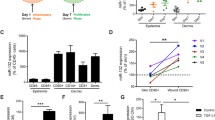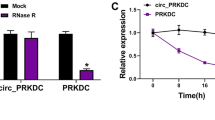Abstract
Inflammation, re-epithelization and tissue remodeling are three essential steps during wound healing. The re-epithelization process plays the most important role which mainly involves keratinocyte proliferation and migration. miR-155 has been reported to participate in cell migration and transformation, however, its function in skin wound healing is largely unknown. Here we hypothesize that overexpression of miR-155 at wound edges could accelerate wound healing mediated by enhanced keratinocyte migration. To test this hypothesis, direct local injection of miR-155 expression plasmid to wound edges was conducted to overexpress miR-155 in vivo. Results shown that miR-155 significantly promoted wound healing and re-epithelization compared to control, while did not affect wound contraction. Also, miR-155 overexpression accelerated primarily cultured keratinocyte migration in vitro, but had no effect on cell proliferation. Importantly, western blot analysis shown that MMP-2 was significantly upregulated whiles its inhibitor TIMP-1 downregulated after miR-155 treatment. Moreover, the use of ARP-101, an MMP-2 inhibitor, effectively attenuated the accelerative effects on cell migration induced by miR-155. Taken together, our results suggest that miR-155 has the promote effect on wound healing that is probably mediated by accelerating keratinocyte migration via upregulated MMP-2 level. This study provides a rationale for the therapeutic effect of miR-155 on wound healing.





Similar content being viewed by others
Abbreviations
- rhPDGF:
-
Recombinant human platelet derived growth factor
- HDMECs:
-
Human dermal microvascular endothelial cells
- TGF-β:
-
Transforming growth factor beta
- TIMPs:
-
Tissue inhibitors of metalloproteinases
- ECM:
-
Extracellular matrix
References
Agren MS (1999) Matrix metalloproteinases (MMPs) are required for re-epithelialization of cutaneous wounds. Arch Dermatol Res 291:583–590
BerteroT, Gastaldi C, Isabelle BP, Veronique I, Agnes L, Eric S, Roser B, Bernard M, Paul H, Pascal B, Guerrino M, Gilles P, Roger R (2011) miR-483-3p controls proliferation in wound edepithelial cells. FASEB J 25:3092–3105
Biswas S, Roy S, Banerjee J (2010) Hypoxia inducible microRNA 210 attenuates keratinocyte proliferationand impairsclosure in a murine model of ischemicwounds. Proc Natl Acad Sci USA 107:6976–6981
Chmielowiec J, Malgorzata B, Markus M, Theresia S, Barbara M, Sabine W, Wehland J, Carmen B, Walter B (2007) c-Met is essential for wound healing in the skin. J of Cell Biol 177:151–162
Giannelli G, Pozzi A, Stetler-Stevenson WG, Gardner HA, Quaranta V (1999) Expression of matrix metalloprotease-2-cleaved laminin-5 in breast remodeling stimulated by sex steroids. Am J Pathol 154:1193–1201
Hopkinson SB, Hamill KJ, Yvonne W, Eisenberg JL, Hiroyasu S, Jonathan CR (2014) Focal Contact and Hemidesmosomal Proteinsin Keratinocyte Migration and Wound Repair. Adv in Wound Care 3:247–263
Irena P, Aly AK, Olivera S, Elizabeth AL, Mayrin CM, Harold B, Robert S, Kirsner JJ, Jimenez CL, Marjana TC (2012) Induction of Specific MicroRNAs Inhibits Cutaneous WoundHealing. J Bio Chem 287:29324–29335
Kong W, Yang H, He L, Zhao JJ, Coppola D, Dalton WS, Cheng JQ (2008) MicroRNA-155 is regulated by the transforming growth factor beta/Smadpathway and contributes to epithelial cell plasticity by targeting RhoA. Mol Cell Bio 128:6773–6784
Li J, Chen J, Kirsner R (2007) Pathophysiology of acute wound healing. Clin Dermatol 25:9–18
Liang Z, Weiwei L, Xunde W, Yunneng T, Jianguo S (2010) Glucocorticoid induces mesenchymal to epithelial transition and inhibits TGF-b1 induced epithelial to mesenchymal transition and cell migration. FEBS Lett 584:4646–4654
Lim LP (2005) Microarray analysis shows that some microRNAs down-regulate large numbers of target mRNAs. Nature 433:769–773
Makela M, Larjava H, Pirila E, Maisi P, Salo T, Sorsa T, Uitto VJ (1999) Matrix metalloproteinase 2 (gelatinase A) is related to migration of keratinocytes. Exp Cell Res 251:67–78
Martin P (1999) Wound healing-aiming for perfect skin regeneration. Science 276:75–81
Massimo M, Santoro GG (2005) Cellular and molecular facets of keratinocyte re-epithelization during wound healing. Exp Cell Res 304:274–286
Mirastschijski U, Haaksma CJ, Tomasek JJ, Agren MS (2004) Matrix metalloproteinase inhibitor GM 6001 attenuates keratinocyte migration, contraction and myofibroblast formation in skin wounds. Exp Cell Res 299:465–475
Nicolas P, Thomas M, Benoit C (2009) Identification of Keratinocyte Growth Factor as a Target of microRNA-155 in Lung Fibroblasts: Implication in Epithelial Mesenchymal Interactions. PLoS ONE 4:e6718
O’Connell RM, Taganov KD, Boldin MP, Cheng G, Baltimore D (2007) MicroRNA-155 is induced during the macrophage inflammatory response. Proc Natl Acad Sci 104:1604–1609
Ravanti L, Kahari VM (2006) Matrix metalloproteinases in wound repair. Int J Mol Med 200:391–407
Rodriguez A, Vigorito E, Clare S, Warren MV, Couttet P, Soond DR, Dongen S, Grocock RJ, Das PP, Miska EA, Vetrie D, Enright AJ, Dougan G, Turner M, Bradley A (2007) Requirement of bic/microRNA-155 for normal immune function. Science 316:608–611
Ryoichi M, Kieran TP, Chiuhui MW, Paul M, David LB (2012) Acute downregulation of connexin43 at wound sitesleads to a reduced inflammatory response, enhanced keratinocyte proliferation and wound fibroblast migration. J Cell Sci 119:5193–5203
Sabine W (1998) Keratinocyte growth factor: a unique player in epithelial repair processes. Cytokine Growth Factor Rev 9:153–165
Salo T, Makela M, Kylmaniemi M, AutioHarmainen H, Larjava H (1994) Expression of matrix metalloproteinase-2 and – 9 during early human wound healing. Lab Invest 70:176–182
Schenk S, Hintermann E, Bilban M, Koshikawa N, Hojilla C, Khokha R, Quaranta V (2003) Binding to EGF receptor of a laminin-5 EGF like fragment liberated during MMP-dependent mammary glandinvolution. J Cell Biol 161:197–209
Shu C, Smith SM, Melrose J (2016) The heparan sulphate deficient Hspg2 exon 3 null mouse displays reduced deposition of TGF-β1 in skin compared to C57BL/6 wild type mice. J Mol Histol 47:365–374
Singer AJ, Clark RA (1999) Cutaneous wound healing. N Engl J Med 341:738–746
Viticchie G, Lena AM, Cianfarani F, Odorisio T, Annicchiarico PM, Melino G, Candi E (2012) MicroRNA-203 contributes to skin re-epithelialization. Cell Death and Dis 3:e435
Xue M, Le NT, Jackson CJ (2006) Targeting matrix metalloproteases to improve cutaneous wound healing. Expert Opin Ther Targets 10:143–155
Yang X, Wang J, Guo SL, Fan KJ, Li J, Wang YL, Teng Y, Yang X (2011) miR-21 promotes keratinocyte migration and re-epithelialization during wound healing. Int J Biol Sci 7:685–690
Yang LL, Liu JQ, Bai XZ, Fan L, Han F, Jia WB, Su LL, Shi JH, Tang CW, Hu DH (2014) Acute downregulation of miR-155 at wound sites leads to a reduced fibrosis through attenuating inflammatory response. Biochem Biophys Res Commun 453:153–159
Acknowledgements
This work was supported by National Natural Science Foundation of China (81601686).
Author information
Authors and Affiliations
Corresponding author
Ethics declarations
Conflict of interest
The authors declared no potential conflicts of interest with respect to the research, authorship, and/or publication of this article.
Additional information
Longlong Yang and Zhao Zheng have contributed equally to this work.
Rights and permissions
About this article
Cite this article
Yang, L., Zheng, Z., Zhou, Q. et al. miR-155 promotes cutaneous wound healing through enhanced keratinocytes migration by MMP-2. J Mol Hist 48, 147–155 (2017). https://doi.org/10.1007/s10735-017-9713-8
Received:
Accepted:
Published:
Issue Date:
DOI: https://doi.org/10.1007/s10735-017-9713-8




